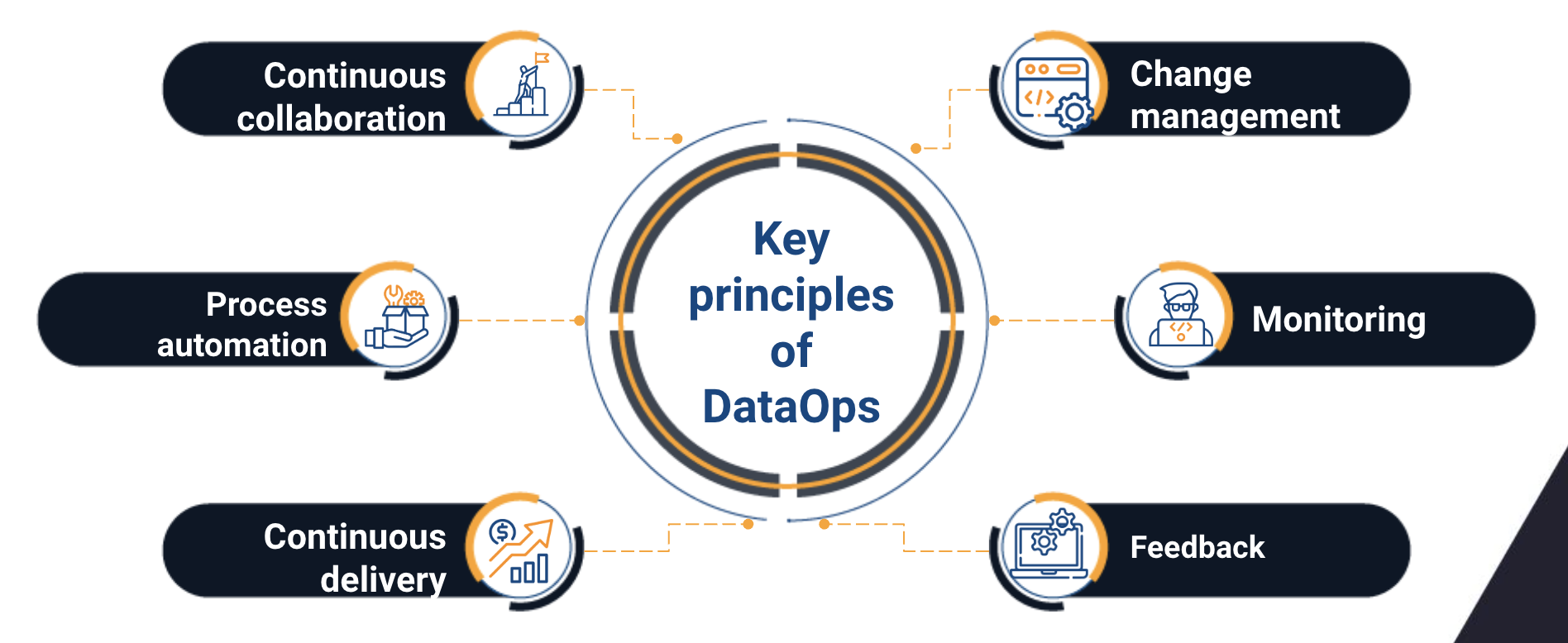
In the era of digital transformation, businesses are increasingly relying on data to make informed decisions and improve their operations. However, managing large volumes of data can be complex and, without a structured approach, can lead to inefficiencies and errors. This is where DataOps comes in.
In this blog, we will review what DataOps is, what it is used for, and what its principles and best practices are, providing managers and business leaders with a clear understanding of how it can improve efficiency in data management.

What is DataOps?
DataOps is an emerging practice that combines software development methodologies, such as DevOps, with data management, to improve the speed and quality of data delivery in organizations.
Unlike traditional approaches that treat data management as a linear process, DataOps promotes continuous collaboration between development, operations, and data analytics teams. It aims to automate and optimize the flow of data from collection to analysis, ensuring continuous delivery of value throughout the entire data lifecycle.
The concept of DataOps focuses on agility, continuous improvement, and error reduction in data processes. By integrating agile development practices, DataOps enables organizations to quickly adapt to change and respond to market demands more efficiently.
Key Principles of DataOps
Effective DataOps implementation relies on several key principles that guide how organizations manage their data processes:
1. Continuous Collaboration
One of the core principles of DataOps is continuous collaboration between all teams involved in data management. This includes development, operations, and data analytics teams, who must work together to ensure that data flows seamlessly through the organization. Collaboration is achieved by adopting tools and platforms that facilitate communication and information sharing in real time.
2. Process Automation
Automation is another essential pillar of DataOps. By automating repetitive and error-prone tasks, organizations can reduce the time needed to process and analyze data, thereby increasing efficiency and accuracy. Automation also enables the implementation of automatic quality checks and validations, reducing the chance of human error and ensuring that data is reliable and consistent.

3. Continuous Delivery
As in DevOps, continuous delivery is a crucial principle in DataOps. It consists of the ability to integrate, test, and deploy changes to data quickly and efficiently. Continuous delivery enables data teams to respond quickly to changes in business requirements or the data environment, ensuring that decisions are based on the most up-to-date information possible.
4. Change Management
Change management is essential to handle updates and modifications to data systems without disrupting operations. DataOps takes a proactive approach to change management, incorporating automated testing and validation to minimize the risk of errors when implementing changes to data processes. This ensures that organizations can quickly adapt to new demands or technologies without compromising data quality.
5. Monitoring and Feedback
Finally, continuous monitoring and feedback are critical to the success of DataOps. Organizations must constantly monitor their data flows to detect potential problems or inefficiencies. In addition, continuous feedback between teams allows for early identification of areas for improvement, facilitating the implementation of changes and continuous improvement in data processes.

Best Practices for Implementing DataOps
Implementing DataOps in an organization requires a disciplined approach and the adoption of certain best practices. Here are some of the most important ones:
Fostering a Culture of Collaboration
For DataOps to be effective, it is crucial to foster a culture of collaboration across teams. This involves breaking down traditional silos between IT, development, and data analytics departments, and promoting open and constant communication. Using collaboration tools and holding regular meetings can help ensure that all teams are aligned and working toward the same goals.
Establishing a Standardized Workflow
A standardized workflow is essential to ensure consistency and efficiency in data processes. This includes clearly defining the stages of the data lifecycle, from collection to analysis, and establishing clear procedures for change management and data validation. A well-defined workflow also makes it easier to automate tasks and implement quality controls.

Adopt Automation Tools
Automation tools are critical to DataOps success. These tools enable organizations to automate tasks such as data integration, data cleansing, and data validation, reducing manual workload and minimizing the risk of errors. Additionally, automation tools make it easier to implement continuous delivery processes, allowing teams to respond quickly to changes in the data environment.
Implement Version Control
Version control is a critical practice in DataOps, as it allows organizations to track and manage changes to data and data processes. By using a version control system, teams can easily roll back to previous versions should issues arise, reducing the risk of disruptions to operations. Additionally, version control facilitates collaboration across teams, by providing a clear record of changes made.
Continuously Measure and Optimize
Finally, it is important for organizations to continuously measure and optimize their DataOps processes. This includes monitoring key metrics such as data processing time, data accuracy, and operational efficiency. By identifying areas for improvement and making adjustments to processes, organizations can ensure their DataOps practices evolve and improve over time, staying aligned with business needs.
DataOps is an essential practice for organizations looking to improve data management and analysis in the digital age. By adopting the principles and best practices outlined in this article, companies can streamline their data processes, reduce errors, and improve the quality of information used in decision-making. For managers and business leaders, understanding and applying DataOps can be a key differentiator in an increasingly competitive market.

